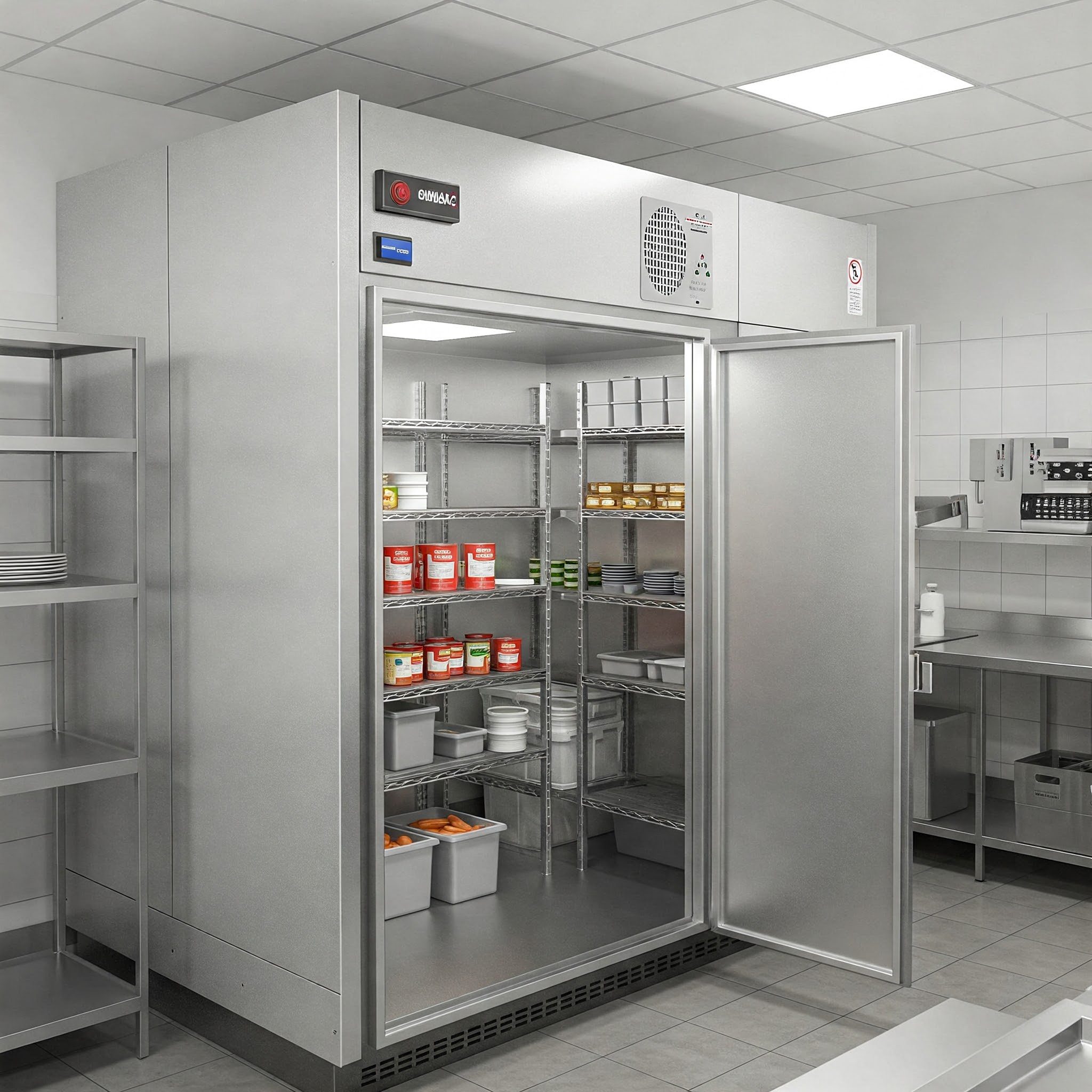Integrated Cold Rooms: Efficient Refrigerated Storage for Commercial and Industrial Use
Integrated cold rooms are temperature-controlled storage spaces designed for businesses that require bulk refrigeration with seamless integration into their existing operations. These units provide consistent cooling, energy efficiency, and customized storage solutions, making them ideal for restaurants, supermarkets, pharmaceutical industries, and food processing facilities.
Whether you need a walk-in cold room for fresh food storage or a temperature-controlled space for medical applications, choosing the right integrated cold room ensures optimal preservation, operational efficiency, and compliance with industry regulations.
What Are Integrated Cold Rooms?
Integrated cold rooms are custom-built refrigeration systems that are installed within an existing facility, offering efficient cold storage with built-in cooling solutions. Unlike remote cold rooms, integrated models have their refrigeration systems housed within the same unit, making them compact, space-saving, and easier to install.
They are commonly used in:
- Restaurants & catering businesses – For storing perishable food ingredients.
- Supermarkets & grocery stores – To keep fresh produce, dairy, and beverages at safe temperatures.
- Pharmaceutical & medical industries – For temperature-sensitive medicines, vaccines, and lab samples.
- Food processing & manufacturing plants – For bulk storage of raw ingredients.
- Hospitality & hotels – To ensure food safety and efficient inventory management.
Types of Integrated Cold Rooms
1. Walk-In Integrated Cold Rooms
- Description: Self-contained, temperature-controlled rooms designed for storing large quantities of perishable goods.
- Best For: Restaurants, supermarkets, and catering services.
- Temperature Range: 0°C to 5°C (32°F to 41°F).
- Advantages:
- Easy access and organization for perishable storage.
- Integrated cooling unit eliminates the need for external systems.
- Highly customizable in terms of shelving and layout.
2. Industrial Integrated Cold Rooms
- Description: High-capacity refrigerated rooms for large-scale cold storage.
- Best For: Warehouses, food manufacturers, and logistics companies.
- Temperature Range: -2°C to 8°C (28°F to 46°F).
- Advantages:
- Designed for bulk inventory storage.
- Heavy-duty insulation for maximum energy efficiency.
- Automated temperature control and monitoring.
3. Pharmaceutical & Medical Integrated Cold Rooms
- Description: Precision-controlled cold rooms for medical and laboratory applications.
- Best For: Hospitals, research facilities, and biotech companies.
- Temperature Range: 2°C to 8°C (35°F to 46°F) for medical refrigeration.
- Advantages:
- Ensures strict temperature stability for medical products.
- Backup power and alarms for added security.
- Meets regulatory standards like FDA, WHO, and GMP.
4. Low-Temperature Integrated Cold Rooms
- Description: Cold rooms designed for storing temperature-sensitive products at near-freezing conditions.
- Best For: Floral storage, scientific research, and specialty food storage.
- Temperature Range: -5°C to 2°C (23°F to 35°F).
- Advantages:
- Extends shelf life of delicate products.
- Integrated cooling reduces energy consumption.
- Easy to install in various commercial environments.
5. High-Humidity Integrated Cold Rooms
- Description: Refrigerated spaces with precise humidity control, ideal for fresh produce and specialty goods.
- Best For: Fruit storage, flower preservation, and delicatessen storage.
- Temperature Range: 0°C to 10°C (32°F to 50°F) with controlled humidity settings.
- Advantages:
- Prevents dehydration of fresh goods.
- Maintains the perfect balance of temperature and humidity.
- Integrated refrigeration minimizes installation complexity.
Key Features of Integrated Cold Rooms
- Built-In Refrigeration System – The cooling unit is housed within the cold room itself, eliminating the need for separate external components.
- Customizable Size & Layout – Can be designed to fit any business’s storage needs, from small walk-in units to industrial-scale cold rooms.
- Precise Temperature Control – Maintains stable cooling conditions for food safety and pharmaceutical storage.
- High-Quality Insulation – Uses polyurethane or PIR panels to maximize energy efficiency.
- Flexible Shelving & Racking – Adjustable configurations for optimal organization and inventory management.
- Energy-Efficient Cooling – Integrated systems reduce energy loss and power consumption.
- Backup Power & Alarm Systems – Ensures continuous operation in case of power failure.
Applications of Integrated Cold Rooms
- Food & Beverage Industry – Storing fresh meat, dairy, seafood, and perishable goods.
- Retail & Supermarkets – Keeping bulk food products at optimal temperatures.
- Pharmaceutical & Medical Storage – Preserving vaccines, medicines, and laboratory samples.
- Catering & Hospitality – Ensuring continuous refrigerated storage for large-scale food preparation.
- Cold Chain Logistics & Warehousing – Managing temperature-controlled supply chains.
Benefits of Integrated Cold Rooms
- Compact & Space-Saving – Integrated refrigeration means no need for external cooling units.
- Easy Installation & Maintenance – Faster setup compared to remote systems.
- Energy-Efficient Operation – Sealed, well-insulated designs reduce cooling loss.
- Customizable Storage Capacity – Can be scaled up or down based on business requirements.
- Meets Industry Compliance – Designed to comply with food safety and pharmaceutical regulations.
Maintenance Tips for Integrated Cold Rooms
Daily Maintenance
- Monitor and record temperature settings for accuracy.
- Keep doors closed when not in use to prevent temperature fluctuations.
- Inspect door seals and gaskets for proper sealing.
Weekly Maintenance
- Clean interior surfaces using food-safe disinfectants.
- Check for ice buildup and defrost when necessary.
- Inspect backup power and alarm systems for functionality.
Monthly Maintenance
- Clean condenser coils and ventilation systems to maintain cooling efficiency.
- Inspect fans and refrigerant levels for optimal performance.
- Verify monitoring systems are functioning correctly.
Troubleshooting Common Issues
1. Cold Room is Not Cooling Properly
- Cause: Dirty condenser coils, refrigerant leaks, or excessive stock loading.
- Solution: Clean coils, check refrigerant levels, and reduce stock.
2. Ice Buildup Inside the Cold Room
- Cause: Faulty door seals or high humidity.
- Solution: Replace seals and improve ventilation.
3. High Energy Consumption
- Cause: Poor insulation, inefficient refrigeration system.
- Solution: Upgrade insulation and schedule maintenance.
4. Compressor Overheating
- Cause: Blocked air vents or overworked refrigeration unit.
- Solution: Clean air filters and ensure proper ventilation.
Choosing the Right Integrated Cold Room
Factors to Consider:
- Size & Storage Needs – Choose based on inventory volume and available space.
- Temperature Range – Determine if you need standard cooling, low-temperature, or humidity-controlled storage.
- Energy Efficiency – Opt for advanced insulation and eco-friendly refrigerants.
- Shelving & Organization – Consider adjustable racks for better storage management.
- Backup Power & Monitoring – Essential for temperature-sensitive products.


